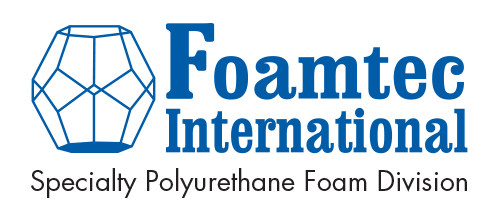Hydrophilic Foam: A Key Material For Everyday Household Products
When it comes to absorbent and moisture-wicking products, hydrophilic polyurethane foam plays a crucial role. This versatile material is used in various applications, from medical dressings and wound care products to cosmetics applicators and household sponges. Understanding the differences between hydrophilic and hydrophobic polyurethane foam is essential to harnessing the full potential of these materials.
When it comes to hydrophobic and hydrophilic polyurethane foam, the key difference lies in their interaction with water. This difference can be achieved by modifying the chemical structure of the foam during the production process. Water is introduced in the process to create hydrophilic foam. Hydrophobic foam is designed to repel water and resist moisture absorption. This makes it suitable for applications like outdoor and marine usage where water resistance and protection are important. By repelling water, hydrophobic foam helps prevent the buildup of moisture, which can contribute to the growth of microorganisms and the deterioration of materials over time.
On the other hand, hydrophilic foam attracts water, quickly absorbing and drawing moisture away from the surface, which promotes rapid evaporation and keeps the underlying materials dry. These foams are the ideal flexible foam solution for medical wound dressings and your kitchen cleaning sponge in which moisture absorbency, breathability, and softness are vital properties.
1. Medical and Healthcare Products: Hydrophilic foam is extensively utilized in wound care products such as dressings and bandages. Its high absorbency and moisture management properties make it ideal for pulling moisture and keeping a moist wound environment conducive to healing. Additionally, it is used in medical applications such as absorbing bodily fluids during surgical procedures.
2. Hydrophilic foam is commonly used in personal care items such as cosmetics applications and feminine hygiene products. Its excellent wicking and absorption abilities help keep the skin dry and comfortable, making it an essential component in these hygiene products.
3. Sports and Outdoor Gear: Hydrophilic foam can be used in sports and outdoor equipment for moisture-wicking linings. Its ability to manage moisture helps maintain comfort and performance during physical activities.
4. Industrial and Environmental Applications: Due to its ability to efficiently absorb specific liquids, In trial settings, polyurethane foam has been created for oil and chemical spill containment. Its application extends to environmental protection measures and clean-up operations.
The Foamtec Advantage
As a leading hydrophilic foam manufacturer, Foamtec International’s Specialty Foam Division can create a wide range of custom hydrophilic foams for various applications. With over 25 years of foam pouring expertise, we can modify every aspect of the foam’s characteristics. Whether it’s absorption rate, density, hardness, or color, Foamtec will create the perfect foam for your application. Also, as one of the only vertically integrated global foam manufacturers, we can pour your customized foam, and then convert and fabricate it to your specs in the same facility. Partnering with Foamtec can add more traceability and cost savings in each step of your foam manufacturing needs. Contact us to let Foamtec answer your hydrophilic foam questions.

